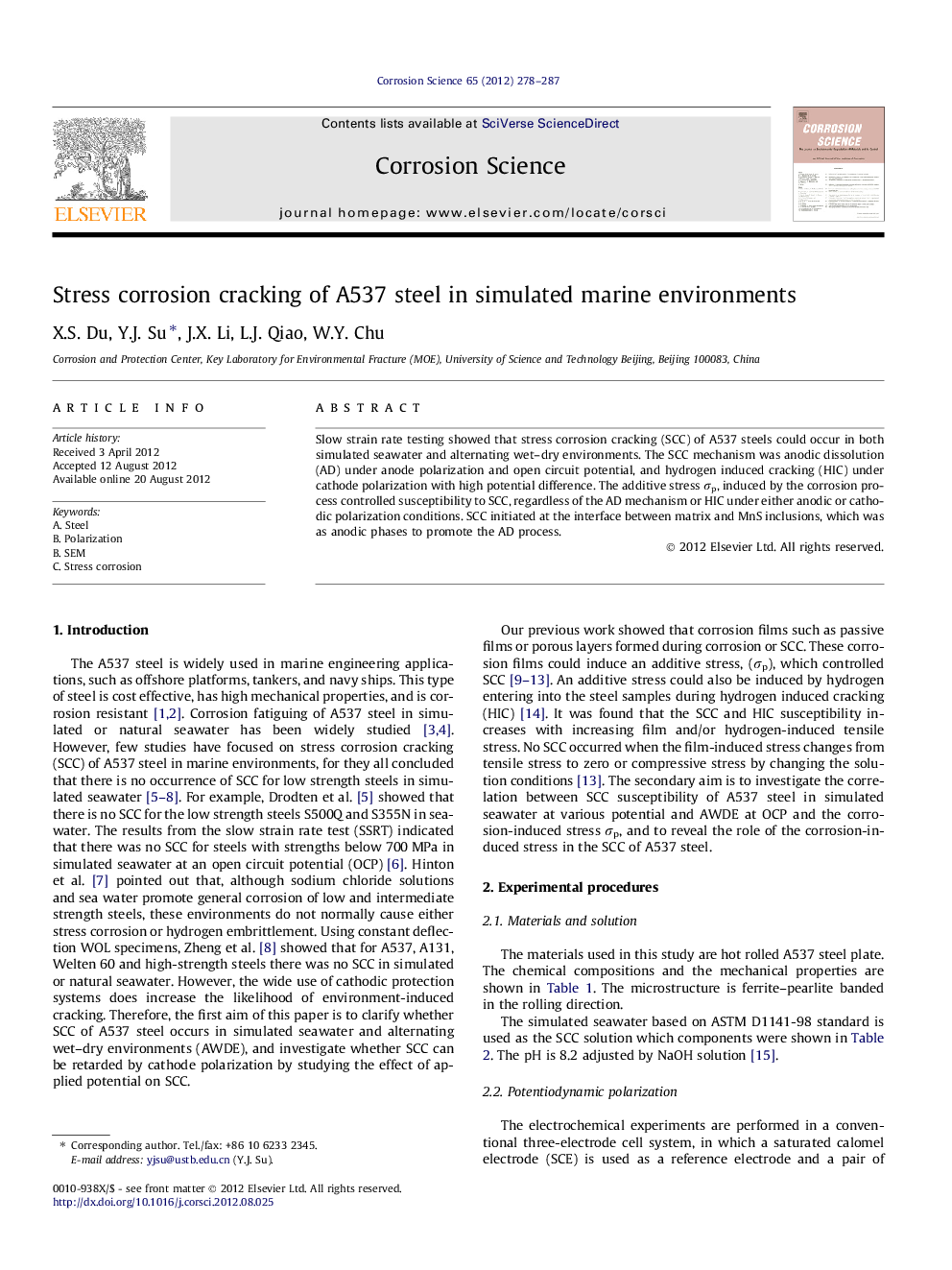| Article ID | Journal | Published Year | Pages | File Type |
|---|---|---|---|---|
| 1469492 | Corrosion Science | 2012 | 10 Pages |
Slow strain rate testing showed that stress corrosion cracking (SCC) of A537 steels could occur in both simulated seawater and alternating wet–dry environments. The SCC mechanism was anodic dissolution (AD) under anode polarization and open circuit potential, and hydrogen induced cracking (HIC) under cathode polarization with high potential difference. The additive stress σp, induced by the corrosion process controlled susceptibility to SCC, regardless of the AD mechanism or HIC under either anodic or cathodic polarization conditions. SCC initiated at the interface between matrix and MnS inclusions, which was as anodic phases to promote the AD process.
► Environmental effects on SCC of A537 steel were studied by slow strain rate test. ► SCC susceptibility increased with increasing corrosion-induced stress. ► SCC initiated at the interface between MnS inclusion and matrix.
